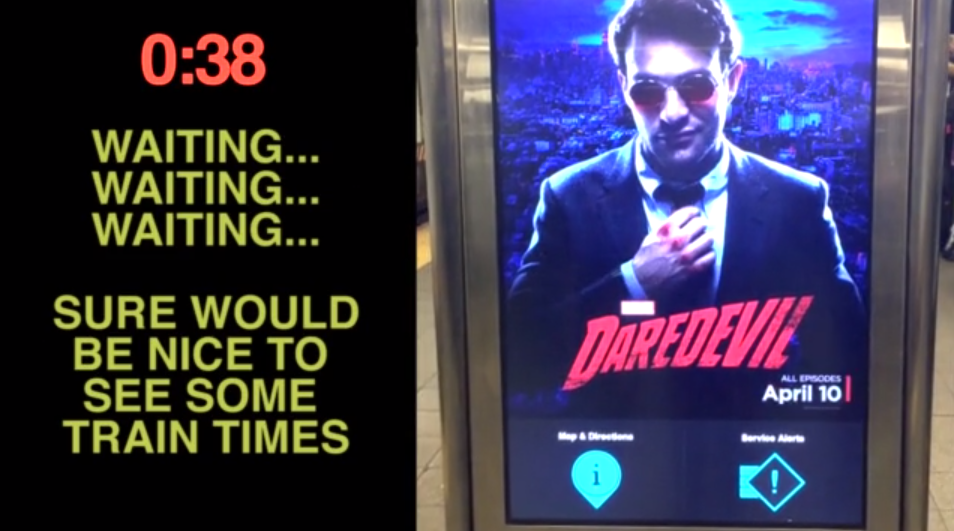Video: Neighbor Slams MTA’s Touchscreens

https://vimeo.com/123912495
Like many of us, neighbor Isaac Royffe spends a good portion of his day riding the rails — and, recently, our neighbor has been more than a little frustrated with the MTA’s relatively new touchscreen kiosks that have been rolled out at subway stations across the city.
Isaac sent us this video that he recently filmed at the Union Square subway station, where he routinely waits to jump on the Q train to go home to Ditmas Park. In the piece, Isaac, who works as a video editor, shows the touchscreens spending far more time playing ads than showing information about when trains will arrive. The film shows ads playing for 45 seconds before 14 seconds of train times.
The touchscreens, the first of which were rolled out a couple years ago at such major stops as Atlantic Avenue-Barclays, Grand Central and Penn Station, are a collaboration between MTA and Control Group — a company that’s footing the bill for the screens. While that means the cash-strapped MTA isn’t forking over funds for the new technology, it does mean that Control Group will be able to make bank on the ad revenue coming in from the screens.
We reached out to both the MTA and Control Group, and the MTA responded, saying the kiosks were never meant to solely be countdown clocks and that they have a 1:1 ratio when it comes to ad time vs. MTA information.
In a statement provided to us, the MTA said:
First and foremost, The On The Go Travel Station kiosks are not countdown clocks, never said they were, nor were they designed to be. So to compare them with screens that were designed to primarily show train arrival information is missing the point entirely. The On The Go Travel Station kiosks are digital interactive screens that provide an array of transit information, such as the ability to plan a trip, view service alerts for planned and unplanned disruptions, elevator and escalator availability and neighborhood maps. Depending on the type and location of the screens they also provide scheduled arrival times for subway, bus, and departure times for commuter rail.
The MTA went on to say that, “over the course of every five-minute period, the time given to MTA screens and advertising screens is 50%/50%. This video was selectively edited to begin at the one point in the sequence where ads take the longest single length of time.”
The statement continued:
Advertisement-funded revenue is paying 100% of the cost to bring real-time digital information screens for the first time to hundreds of locations in 29 stations and counting. In other words, this information is coming at no cost to the rider or the taxpayer, and complements our other digital efforts in stations, online, and through apps.
As for whether or not there are plans to change the touchscreens in the near future, the MTA said they “are in constant discussions about the ad content loops, our messaging and their platforms with an eye toward our goal of improving the user interface and providing the most accurate, actionable and contextual information to our customers at the point of transit decision making.”
Control Group also responded, saying that the “On the Go kiosks provide customer amenities like wayfinding, MTA information and service alerts. It is supported by advertising so that there is no cost to riders and taxpayers for these services.”
As for our neighbor, Isaac said that while he’s been frustrated by the touchscreens, he’s now inspired to get more involved in pushing for change in our subway stations and plans to advocate for funding for station clocks.
What do you all think? Have you too been disappointed with the touchscreens, or are you happy with them? Do you want to see them in our neighborhood stations, or would you rather have something else? Let us know in the comments below!